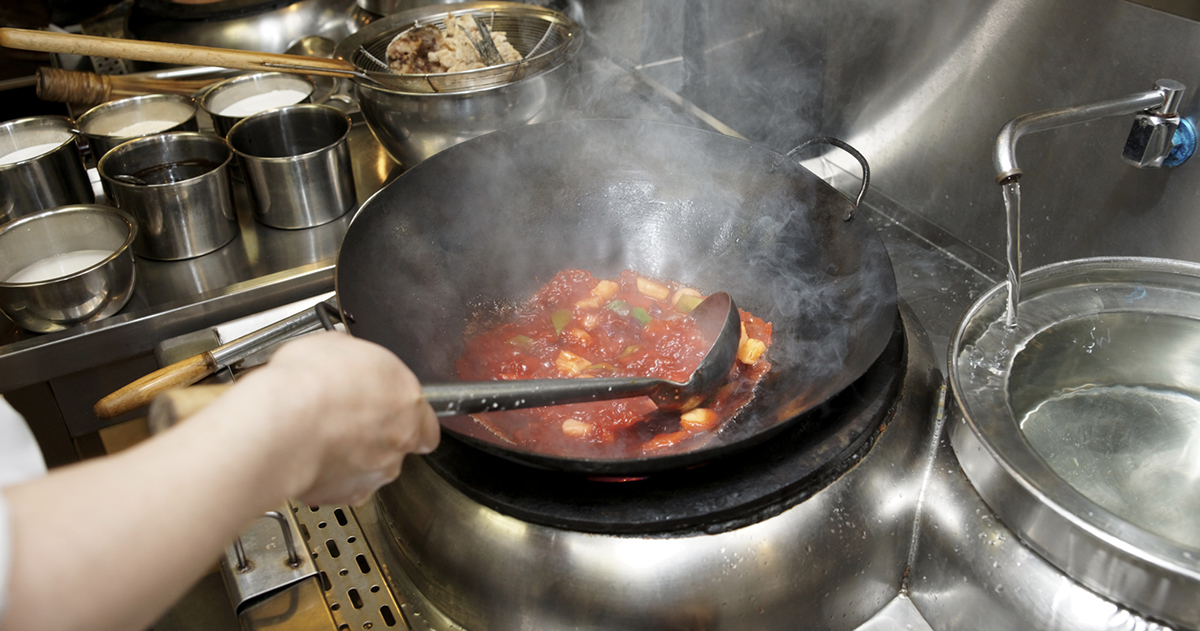For decades, Singaporean society has regarded the cooking craft — or indeed, jobs in the food-and-beverage industry here — to be a low-skilled, manual occupation that doesn't deserve much by way of payment.
A recent op-ed turns this concept on its head, though, calling for a change in this widely-held perception — in the event any of us are still hoping our local food culture will survive the next half-century.
Here are some key points raised in it we think you should understand too:
1. The profile of Singapore's cooks is changing.
When one thinks of cooking, what often comes to mind is the average fifty-something-year-old hawker, who might have stopped schooling after primary six in order to learn the family trade and support the household and a number of younger siblings, making a living in a one, at most three-man operation from the same single stall for most of his or her working life.
This image is evolving, though — in the past decade or more, in particular, we're seeing the rise of the young Singaporean chef.
More young Singaporeans are taking up diploma and degree courses in cooking at reputable schools like the Culinary Institute of America and At-Sunrice Globalchef Academy, and enter the industry joining restaurants, bakeries and caterers.
These students pay high fees for their specialised training, and current starting salaries at restaurants that require their skills (roughly $1,900 per month at most, we understand) won't be able to help them clear their debt for at least the first two or three years — and this is provided their fees are subsidised, which isn't always the case.
"The reality of this situation can cause a cook to decide to leave the industry simply for more lucrative opportunities – the money, for the most part, is difficult to see as reasonable remuneration for the hours put in given their debt."
2. In this light, should cooking still be regarded as a blue-collar profession?
In the classical sense and definition of the term, cooking is undisputedly a blue-collar job:
 Screenshot from Google
Screenshot from Google
But, as the op-ed writer Loga Raj points out, it's time to recognise the sheer amount of effort, training, time and experience it takes to attain professional cooking skills.
"We need to start valuing the years it takes to be good at what we do in the same light that a person in a white-collar profession takes to pick up the basics of his line of expertise. When we start doing that, the traditional view that the Singaporean society has of the industry, that such laborious jobs come to those who chose not to work hard earlier in their lives, will begin to change...
Few other professions categorised as blue-collar have specialty degree or diploma programmes that offer specific skills. This puts cooking in a strange situation, where its status is, at best, in a state of flux."
3. Turning back to hawking food, it's simply not a very viable profession.
With rising costs of ingredients, stall rental, utilities and public pressure to keep prices low, it's a wonder Singaporean hawkers are still around, really.
Say he or she wanted to hire an extra pair of hands to help — that's additional income gone — and that's why we really need to think hard about prices if we truly value good, solid Singaporean hawker food.
"We could say that it is the economics of the hawker food market that allows for a bowl of noodles to be sold at $3, and proceed to brag about how it is possible to have the best of both worlds in our country. The conundrum here is that we lament about how our favourite hawkers are disappearing while bitching about the increment in prices, which ultimately help sustain them."
Raj writes that hawkers who choose to franchise their businesses often end up with sub-par food made with cheaper overhead costs. Yet, he says economics dictates that at the end of the day, these larger franchises will prevail over traditional folks who persist in staying put at a single stall, focusing on quality over quantity.
"Simply put, the depressed values we place on our local food will eventually destroy the industry that supplies them, or at least the ones we have attached so much emotional value to. What will come about instead will be their replacement with less than ideal, but more affordable options."
So, how do we help save our hawkers or encourage our Singaporean trained chefs to grow in our F&B industry?
There are no easy answers to this question, since it involves parties ranging from landlords to consumers. But as consumers — people who pay for and eat the cooked food — we may want to consider:
- Being willing to pay more for food we buy, even from hawkers;
- Support our hawkers in keeping prices low for people who can't afford to pay more, through initiatives like Chope Food for the Needy.
- Try not to complain about the prices of food or drinks rising, because it gives the industry, the union and the government, possibly, an impression that meal prices — and therefore a cook's living — must take priority over all else.
[related_story]
Related articles:
Thank you policymakers, local hawker culture is dying because of you. *Hugs*
What kind of $2.70 fishball noodle would you like?
Top image from Thinkstock
If you like what you read, follow us on Facebook, Instagram, Twitter and Telegram to get the latest updates.
